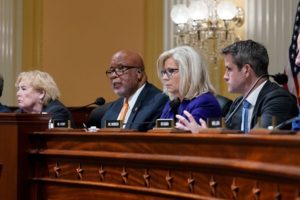In his opening remarks at Supreme Court nominee Brett Kavanaugh’s confirmation hearing, Texas Senator Ted Cruz observed that, to a previously unequalled degree, the 2016 presidential election had been a referendum on the future composition of the Supreme Court. He noted that, at all three presidential debates, Hillary Clinton and Donald Trump had sharply differed on the constitutionally proper role of the court. Clinton made clear that, if elected, she would nominate progressive jurists who would in effect serve as super legislators answerable to no one but themselves. In contrast, Trump promised to appoint justices who would limit themselves to interpreting and applying the constitution and laws as written without allowing their personal beliefs or policy preferences to affect the legal process or outcome.
According to Cruz, by electing Trump, the American people have expressed their preference for a non-activist Supreme Court.
Immediately upon taking office, President Trump appointed Neil Gorsuch to the court. Since his Senate confirmation in April 2017, Gorsuch has been a key vote in a cascade of 5 to 4 conservative majority decisions which have the potential to substantially alter our social and political landscapes.
For example, in Janus v. AFSCME Council 31, the narrow conservative majority held that non-union government workers cannot be forced to pay dues to public sector unions. The majority reasoned that requiring government employees to finance unions to which they do not belong constitutes “compelled speech” in violation of the First Amendment. This decision poses a direct threat to the political power wielded by these unions which represent an estimated 35% of all government employees and uniformly support liberal, progressive causes and candidates.
In Husted v. A. Philip Randolph Institute, the majority upheld Ohio’s “voter purge” law that is intended to keep the state’s voting lists up to date by removing the names of those who have moved out of the district where they are registered. As noted by the majority, an estimated 24 million voter registrations in the United States – about 1 in 8 – are either invalid or significantly inaccurate. By upholding Ohio’s effort to clean up its voter roles, the court has green lighted similar efforts throughout the country to reduce this breeding ground for voter fraud.
Similarly, in National Institute of Family and Life Advocates v. Becerra, the same majority struck down California’s Reproductive Fact Act which required pro-life, pro-adoption crisis pregnancy centers to advise their patients of state funding for abortion and contraception. This was another victory over government mandated speech.
These are just a few of the very significant decisions made possible by Gorsuch’s appointment. Now, with the retirement of Justice Anthony Kennedy, the court’s ideologically vacillating “swing vote”, President Trump is on the verge of putting in place a solid and consistently conservative 5 vote court majority by his appointment of Brett Kavanaugh. And, before his term is up, he may well have the opportunity to further increase that majority.
But President Trump’s transformation of the judiciary hasn’t stopped and won’t end with the Supreme Court. Since taking office, he has placed 22 judges on the critically important federal circuit courts of appeal and appointed 20 district court judges. Pending before the Senate are 2 more nominations for the circuit courts and dozens of district court nominations. In comparison, at the same point in their first terms, George W. Bush and Barack Obama together had placed fewer judges on the circuit courts than has Trump. If he can maintain this pace, Trump could substantially impact – if not outright transform – the ideological make up of the judicial branch from top to bottom.
This fundamental but essentially unheralded judicial reformation is all the more remarkable given that it has been accomplished in the face of the unrelenting and venomous tidal wave of anti-Trump assaults by the Democrats, their media steno pool, academia and the leftist Hollywood establishment. Not even the effort by Special Counsel Robert Mueller to destroy President Trump and the ongoing threats of impeachment have slowed his transformation of the judiciary.
Thanks to the president’s ongoing recasting of the federal judiciary, the days of unelected robed philosopher kings and queens issuing rulings based on their feelings or unwritten legal principles lurking in the penumbras of the constitution are running out. We are witnessing a return to the rule of law based on the constitution as written by the Founders and on statutes as written by our elected representatives. In short, we are witnessing the presidential imposition of sanity on the judicial branch, a monumental and historical achievement that will halt and hopefully reverse half a century of judges making laws and practicing social engineering without the consent of the governed.
And this will be President Trump’s most significant and longest lasting legacy. For long after he and his political foes have departed the public arena, the nation will continue to reap the benefit of his having wrested legislative power from life-tenured federal judges and returned it to our elected representatives who are answerable to us at the ballot box. In short, he will have restored a government of, by and for the people.
What a radical concept.



Leave a Reply
Leave a reply.